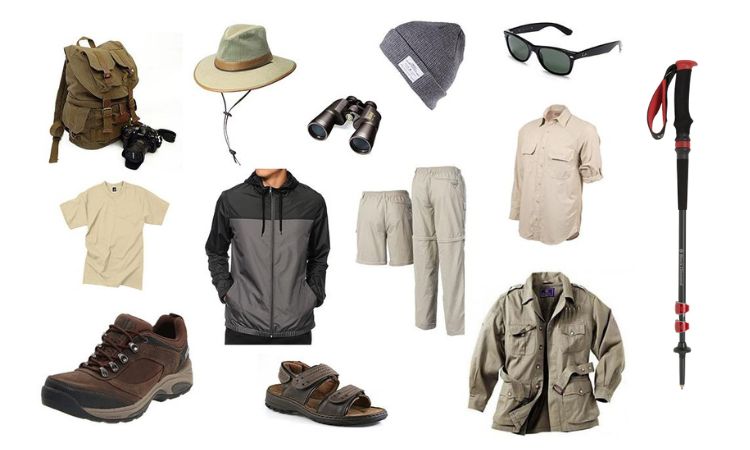
Uganda Holidays FAQs
Uganda Holidays FAQs
Referred to as the “Pearl of Africa” by Winston Churchill in his 1908 book titled My African Journey. This nickname neatly sums up Uganda’s rich beauty and today the moniker is as valid as Uganda has grown into one of the most remarkable travel destinations in Africa.
A holiday in Uganda is undoubtedly one of the most unique adventures you will experience on the continent. With over 20% of its land dedicated to wildlife reserves, the country remains largely untouched, leaving the gorgeous landscape to take centre stage on Uganda safaris.
While planning holiday to this remarkable country, we have answered some of the frequently asked questions in regard to a Uganda holidays.
What are the best places to visit in Uganda?
Undoubtedly, the national parks are among the best places to visit in Uganda. From the renowned Bwindi Impenetrable National Park, home to the majestic mountain gorillas, to the diverse Queen Elizabeth National Park, famous for its tree climbing lions.
Uganda has a wealth of natural wonders and wildlife to discover. Addition, a journey to the source of the Nile in Jinja, explore the spectacular Murchison Falls National Park – home to four of the Big Five and the most powerful falls in the world – Murchison Falls an enjoy an awe-inspiring game drive along the Rwenzori Mountains to soak up views of the glaciated peaks.

When is the best time to visit Uganda?
Uganda enjoys a tropical climate, meaning it is a year-round destination. However, the best time to visit is during the dry seasons, which typically fall between June to September and December to February. These months offer clear skies, less rainfall and better chances of spotting wildlife.
It is important to note that gorilla trekking is possible throughout the year, but the rainy seasons (April to May and October to November) can make the trekking trails in Bwindi Forest and Mgahinga more challenging. However, rain can also occur during the dry season so it’s always best to be prepared whenever you travel.
How can I see the mountain gorillas in Uganda?
To see mountain gorillas in their natural habitat in Uganda, you must obtain a Uganda gorilla permit which allows you to trek through the forest of Bwindi Impenetrable National Park and Mgahinga Gorilla National Park to go in search of these majestic primates.
The gorilla permits are limited and often need to be booked well in advance. On our gorilla tours in Uganda, we head into the trails of Bwindi Forest and Mgahinga, trek through the undergrowth and up some steep ascents. The ground can often be muddy and slippery, and it can take anything from one to six hours to track down a family of gorillas, so you will need to have a reasonable level of fitness.
What wildlife can I expect to see in Uganda?
Uganda is a natural paradise for wildlife lovers, home to a wide range of species. Besides the iconic mountain gorillas at Bwindi Impenetrable National Park, you can encounter chimpanzees and other primates like Kibale Forest National Park or Budongo Forest Reserve. If you want to witness the iconic Big Five, which includes elephants, lions, leopards, rhinoceros and buffaloes, head to Murchison Falls National Park and Queen Elizabeth National Park.
Bird species such as the rare shoebill stork and the papyrus yellow warbler are just two of the 190,000 birds that are native to the popular Mabamba Swamp, which can be found to the west of Entebbe, along the northern shores of Lake Victoria.
What should I pack for my Uganda tour?
When packing for a Uganda Tour, it is essential to pack appropriate clothing and gear but mostly importantly, take comfortable and sturdy walking shoes. You will need to prepare for rain because even if you are travelling during the dry season, there is always a chance of a downpour.

Lightweight and breathable layers of clothing, a hat, sunscreen and insect repellent are all essentials, and don’t forget to pack your camera. It is also advisable to bring a waterproof jacket and extra layers for the cooler evenings and early mornings, as temperatures can vary, especially in the mountainous regions.
Do I need vaccinations for Uganda?
You will need to be vaccinated against yellow fever when traveling to Uganda and you will also need to bring a vaccination certificate with you. Although not essential, we do recommend vaccinations for typhoid, polio, hepatitis A and B, rabies, tuberculosis, cholera and tetanus.
To reduce the risk of malaria from mosquito bites, you will need Malaria prophylaxis and in addition to this, please take the usual precautions to protect yourself from bite. Always speak to your medical professional before you travel.
How long should you spend in Uganda?
The duration of your safari in Uganda will depend on various factors such as your interests and itinerary. Known as the “Pearl of Africa” Uganda offers a wealth of experiences, ranging from wildlife safaris in national parks to exploring the source of the Nile River in Jinja.
To immerse yourself fully in the beauty and wildlife of this diverse beautiful country, it is recommended to spend between 10 and 15 days here. This allows ample time to explore the country’s popular destinations like Bwindi Impenetrable National Park for gorilla trekking and Batwa Village Experience, Queen Elizabeth National Park for game drives and Kazinga Channel boat cruise and Murchison Falls National Park for scenic boat cruise and game drives.
